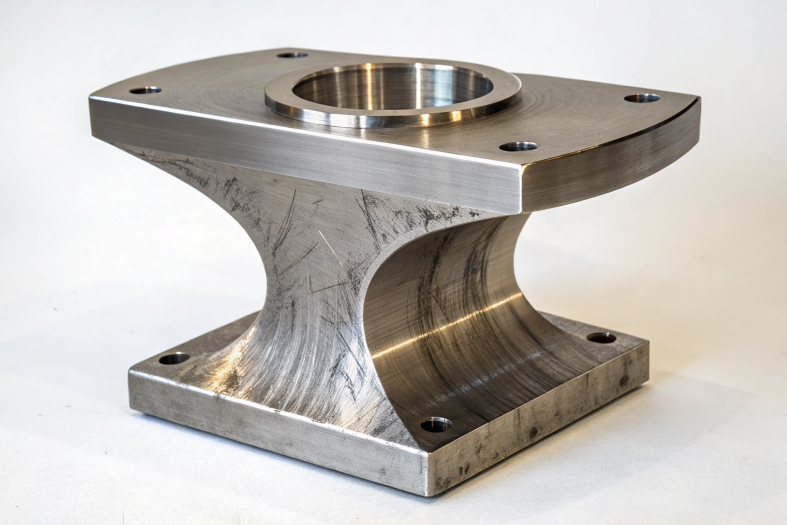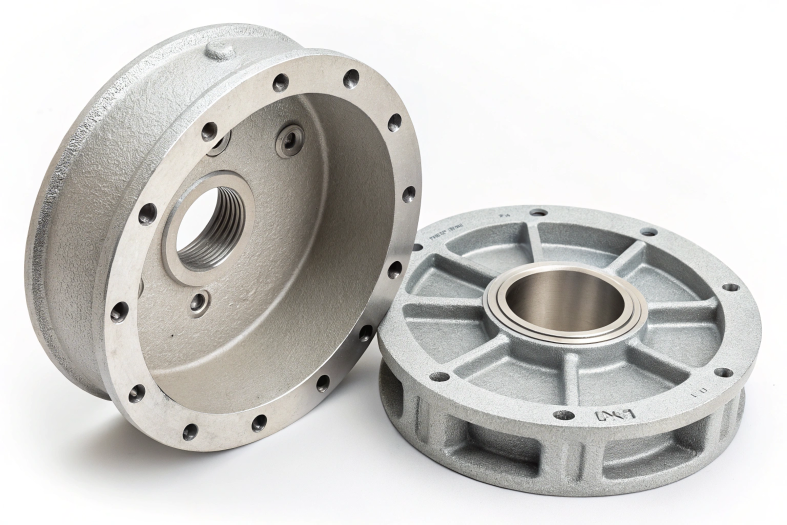The increasing demand for high-precision components in manufacturing and engineering has surpassed the capabilities of traditional tools. This lack of precision can lead to defective parts, equipment failure, and reduced overall efficiency. Precision machine tools are designed and developed to address these challenges, ensuring consistent accuracy and quality in modern production.
Direct Answer:
CNC machines were created to meet the demand for high-precision, automated manufacturing during World War II, enabling efficient and consistent production of complex parts.

1. The Birth of CNC Machines: A Milestone in Precision Manufacturing
Historical Context
The story of precision machine tools cannot be told without recognizing the invention of CNC machines, which began as a wartime innovation. During World War II, the U.S. military faced a pressing need to produce complex and highly accurate parts for aircraft. Traditional manual machining methods were too slow and inconsistent to meet these demands. The military commissioned research into automated machining systems, leading to groundbreaking developments at the Massachusetts Institute of Technology (MIT).
Key Developments in CNC Technology
- 1940s: The foundation of CNC machines was laid with the development of early numerical control systems that used punch cards to dictate machine movements.
- 1949: The first CNC prototype was built at MIT, using punched tape as a medium to automate machining processes. This allowed for precise and repeatable movements.
- 1952: Commercial CNC machines were introduced, revolutionizing the industry by combining automation with precision.
- 1970s: The introduction of microprocessors and computer technology made CNC machines more accessible, programmable, and capable of handling complex geometries.
Impact of CNC Technology
CNC machines transformed the manufacturing landscape by:
- Automating Repetitive Tasks: Eliminating human errors and improving efficiency.
- Enabling Complex Geometries: Producing intricate parts that were previously impossible to machine manually.
- Achieving Repeatable Precision: Maintaining consistent quality across large production runs.
Example: Aerospace Industry
In the aerospace sector, the production of turbine blades and engine components requires tolerances of less than 0.01 mm. CNC technology provided the precision and consistency needed to meet these exacting standards, paving the way for safer and more efficient aircraft.
2. The Demand for High-Precision Manufacturing
The creation of precision machine tools was driven by the growing need for high-accuracy components in critical industries. As technology advanced, so did the complexity of the parts required, pushing the limits of traditional machining methods.
Industries Demanding Precision
- Aerospace: Precision is crucial for components like turbine blades, jet engines, and structural parts that operate under extreme conditions.
- Medical: Surgical instruments, implants, and diagnostic devices must meet exact specifications to ensure safety and effectiveness.
- Automotive: Modern vehicles rely on precision for components like fuel injectors, transmissions, and electric vehicle battery housings.
- Electronics: Miniaturization trends demand precision machining for microchips, connectors, and casings in consumer devices.
Market Pressures
- Global Competition: Manufacturers face pressure to produce high-quality parts faster and more cost-effectively.
- Customization: Growing demand for tailored solutions, such as bespoke medical implants or custom automotive parts, necessitates flexible and precise machining capabilities.
3. Advancements in Technology
Technological progress has played a pivotal role in shaping precision machine tools, making them more accurate, versatile, and efficient.
Key Innovations
- Multi-Axis Machining: Modern CNC machines operate on five or more axes, enabling the machining of complex shapes in a single setup.
- AI and IoT Integration: Real-time monitoring systems and AI-driven analytics optimize machining parameters, reducing downtime and improving accuracy.
- Ultra-Precision Techniques: Technologies like diamond turning achieve surface finishes measured in nanometers, essential for applications in optics and semiconductors.
Future Trends
Emerging technologies, such as hybrid additive-subtractive manufacturing and autonomous CNC systems, promise to further expand the capabilities of precision tools.

4. Material Innovations
The evolution of materials has introduced new challenges and opportunities for precision machining.
Advanced Materials
- Titanium and Superalloys: Widely used in aerospace and medical applications, these materials require durable tools and advanced techniques to machine effectively.
- Composites: Lightweight and strong, composites are crucial for automotive and aerospace industries but present unique machining challenges, such as preventing delamination.
- Ceramics: Used in electronics and medical devices, ceramics demand ultra-precision grinding to achieve the necessary finishes.
Material-Driven Innovation
The need to machine these materials has led to the development of specialized cutting tools, coatings, and cooling systems that enhance the performance and longevity of precision machine tools.
5. Collaboration in Research and Development
The creation of precision machine tools is often the result of collaborative efforts between industry, academia, and government.
Partnerships and Programs
- Industry-Academic Collaborations: Universities like MIT and Stanford work with manufacturers to develop cutting-edge technologies.
- Government Initiatives: Programs such as Germany’s Industry 4.0 promote smart manufacturing solutions.
- Case Study: Boeing’s collaboration with cutting-tool manufacturers has resulted in tools that reduce machining time by up to 30% while maintaining precision.
6. Sustainability in Precision Machining
Environmental concerns are shaping the future of precision machine tools.
Sustainable Practices
- Energy-Efficient Machines: CNC systems with energy-saving modes reduce power consumption.
- Recycling and Waste Management: Metal shavings and coolants are increasingly recycled to minimize waste.
- Eco-Friendly Materials: The use of biodegradable cutting fluids is gaining traction.
Example: Automotive Industry
By adopting sustainable machining practices, automotive manufacturers have significantly reduced their carbon footprint, aligning with global environmental goals.

Conclusion
The creation of precision machine tools, particularly CNC machines, is the result of historical necessity, technological advancements, and industrial demand. From their origins in military-funded research to their widespread adoption across industries, these tools have revolutionized manufacturing, enabling the production of components with unparalleled accuracy and complexity.
Looking to the future, precision machine tools will continue to evolve, driven by emerging technologies, advanced materials, and sustainability goals. Their importance in shaping the modern world cannot be overstated. What challenges and opportunities do you see for precision machining in the years to come? Share your thoughts and insights!
FAQ:
1. How are precision machines made?
Precision machines are manufactured using advanced engineering and machining techniques to ensure high accuracy and reliability. The process involves:
- Design: Engineers design the machine using CAD software, optimizing for performance and durability.
- Material Selection: High-quality materials such as steel, aluminum, and alloys are chosen for critical parts.
- Machining: Components are crafted using CNC machines to achieve tight tolerances.
- Assembly: Skilled technicians assemble the machine, aligning all parts precisely.
- Testing: Rigorous quality control tests are performed to ensure the machine meets specifications.
2. What are the main components of machine tools?
The main components of machine tools include:
- Bed/Base: Provides stability and support for the entire machine.
- Spindle: Holds and rotates the cutting tool or workpiece.
- Tool Holder: Secures the cutting tools in place.
- Control System: The CNC system or manual controls for operating the machine.
- Feed Mechanism: Moves the tool or workpiece for accurate cutting.
- Motor: Powers the machine's operations.
- Coolant System: Keeps the machine and workpiece cool during machining.
3. What is precision tooling?
Precision tooling refers to specialized tools and equipment designed for producing high-accuracy components. It includes:
- Cutting Tools: Tools such as drills, end mills, and inserts with micron-level tolerances.
- Jigs and Fixtures: Devices used to hold workpieces in place during machining.
- Inspection Tools: Precision measurement instruments like micrometers and CMMs (Coordinate Measuring Machines).
Precision tooling is essential for achieving consistent quality in industries like aerospace, medical, and electronics.
4. What is precision machine components?
Precision machine components are high-accuracy parts that make up the functional elements of a machine. Examples include:
- Ball Screws: Convert rotational motion into linear motion with minimal backlash.
- Linear Guides: Provide smooth and precise linear movement.
- Bearings: Reduce friction and support rotating parts.
- Gear Systems: Ensure accurate and efficient power transmission.
- Hydraulic or Pneumatic Systems: Control force and motion in specific applications.


